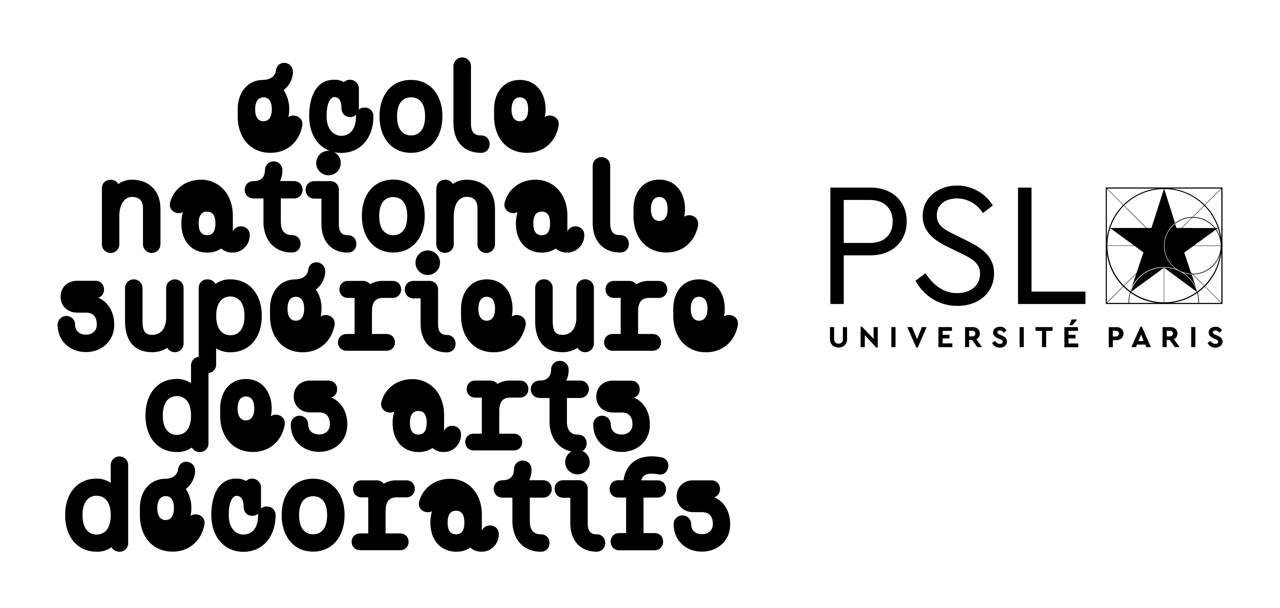Samuel Bianchini and Ianis Lallemand, 2019
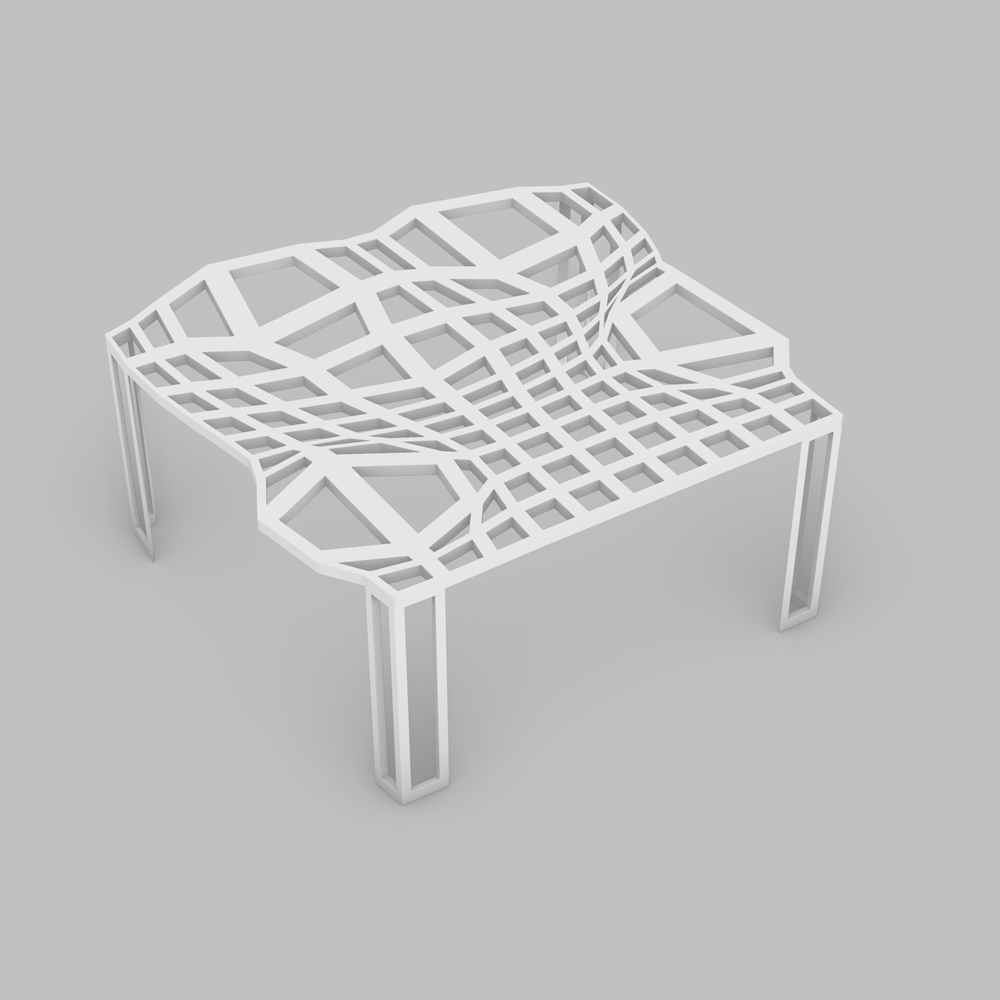
A project by Samuel Bianchini and Ianis Lallemand, developed within the EnsadLab Reflective Interaction Research Group (laboratory of the Ecole nationale supérieure des Arts Décoratifs, Université PSL, Paris) with the support of the Chaire arts & sciences of Ecole polytechnique, Ecole nationale supérieure des Arts Décoratifs – PSL and Daniel and Nina Carasso Foundation.
This project was initiated during the “Useful Fictions” symposium, in the context of the “Data Materia” workshop, which aimed at materializing and designing protoypes and installations based on datasets, such as those from climate science and other sources, to create new narratives about our impact and explore new dimensions in our relationships. The first iteration of this project was made with the collaboration of this “Data Materia” workshop participants: Jiayi Young, Filippo Fabbri, Jeanne Bloch, Jacklyn Brickman, Elín Margot, Raphaelle Kerbrat.
In conferences and other forms of public debates, the layout of furniture influences the way people speak out and talk to each other. Thus, round tables tend to encourage exchanges. But what would happen if the tables themselves gave the floor? Changing shape according to the words exchanged and the people pronouncing them, this furniture would then become a central actor in the debate. Questioning the fundamental relationships between verb and matter, this project calls for an implementation bringing together two forms of tables: calculation tables and tables as furniture, making signs calculable. This operational relationship is being explored here, by using a table of keywords, the weight of which vary in two ways: first, according to the interest that each participant in the debate gives them, and then, in real time, according to their integration into the exchanged words.
The table geometry consists in a deformed grid of rectangular cells, each attributed to one keyword. The keywords’ location within the grid is computed to match the seats of the guests that have proposed them, so that each participant in the discussion sits “in front” of its own keyword. In its initial state, the keyword grid looks similar to graphical representations of tabular data in office productivity software. As the discussion taking place around the physical table progresses, keyword receive weights based on their frequency of use. An algorithm then scales up and distort the cells based on these weights, provoking a parametric adjustment of the table’s geometry.
Five 3D printed models will be presented at the exhibition, showing different states of the table’s deformation. A real-size and dynamic table prototype could be realized through the use of a mesh of linear or hydraulic actuators, linked together by ball-type joints allowing for a free range of motion in the horizontal plane. This mechanical configuration enable the table cells to expand freely, updating the table’s geometry in real-time as the discussion progresses. Keyword weight’s could be computed by a machine learning system performing speech recognition and analysis on the guests’ voices.
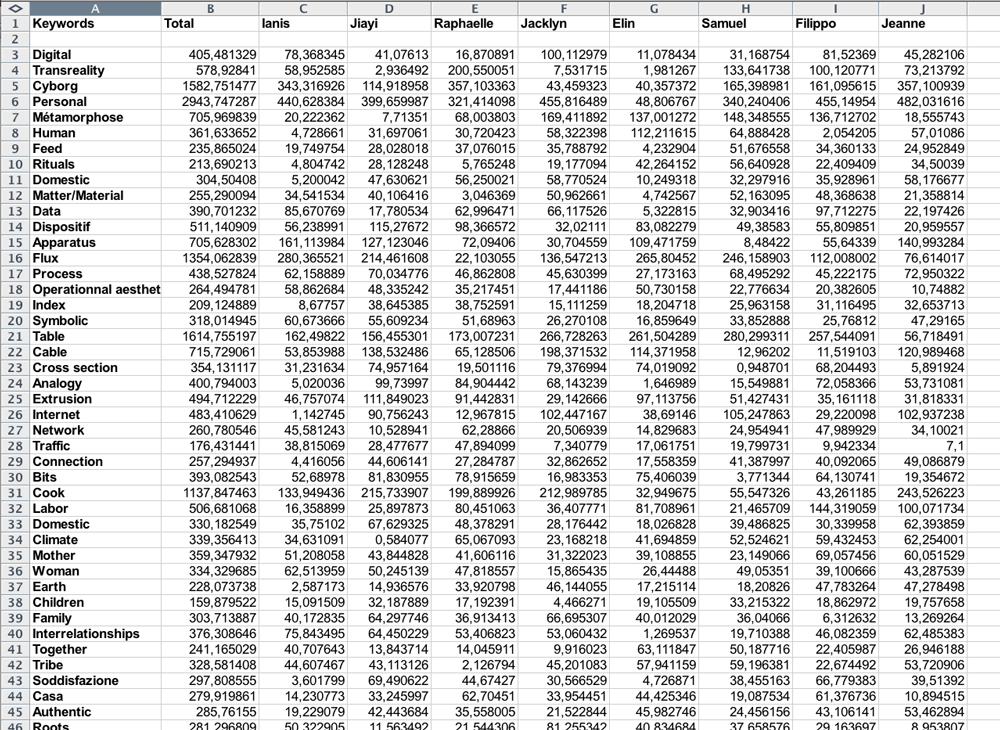
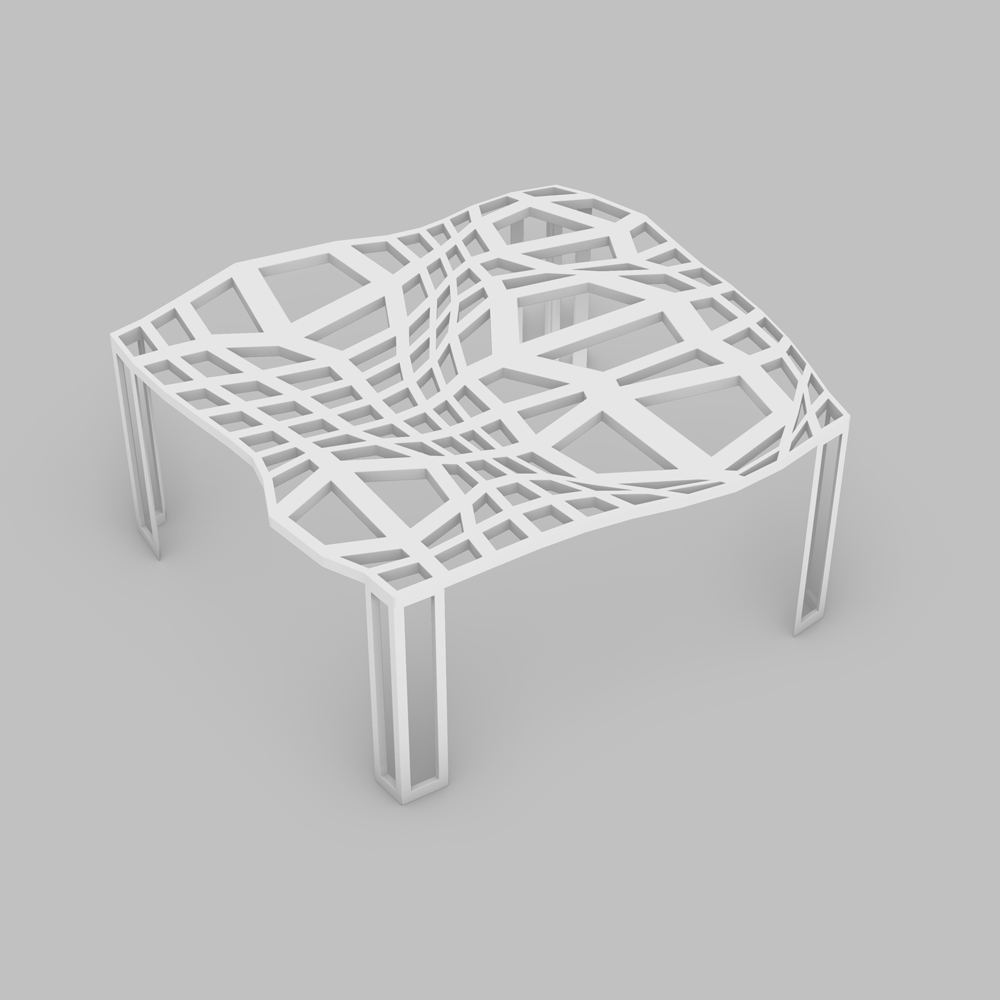
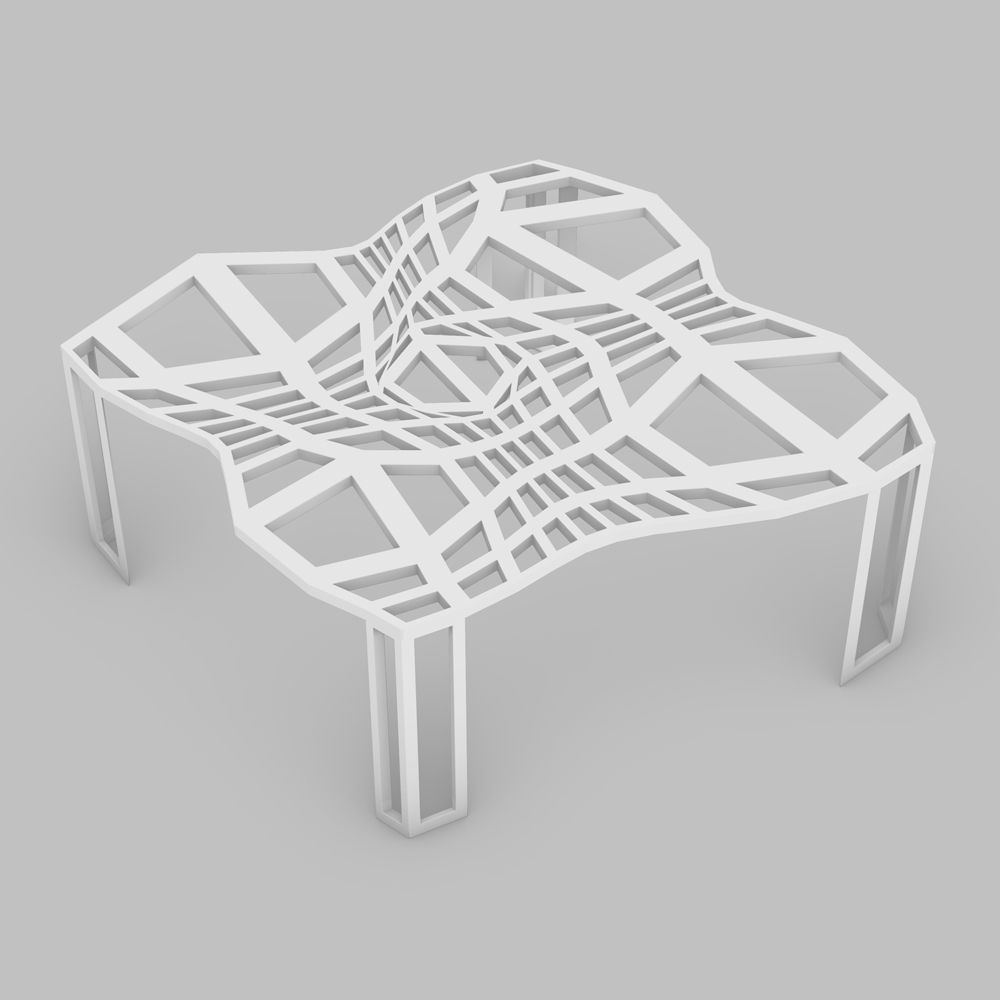
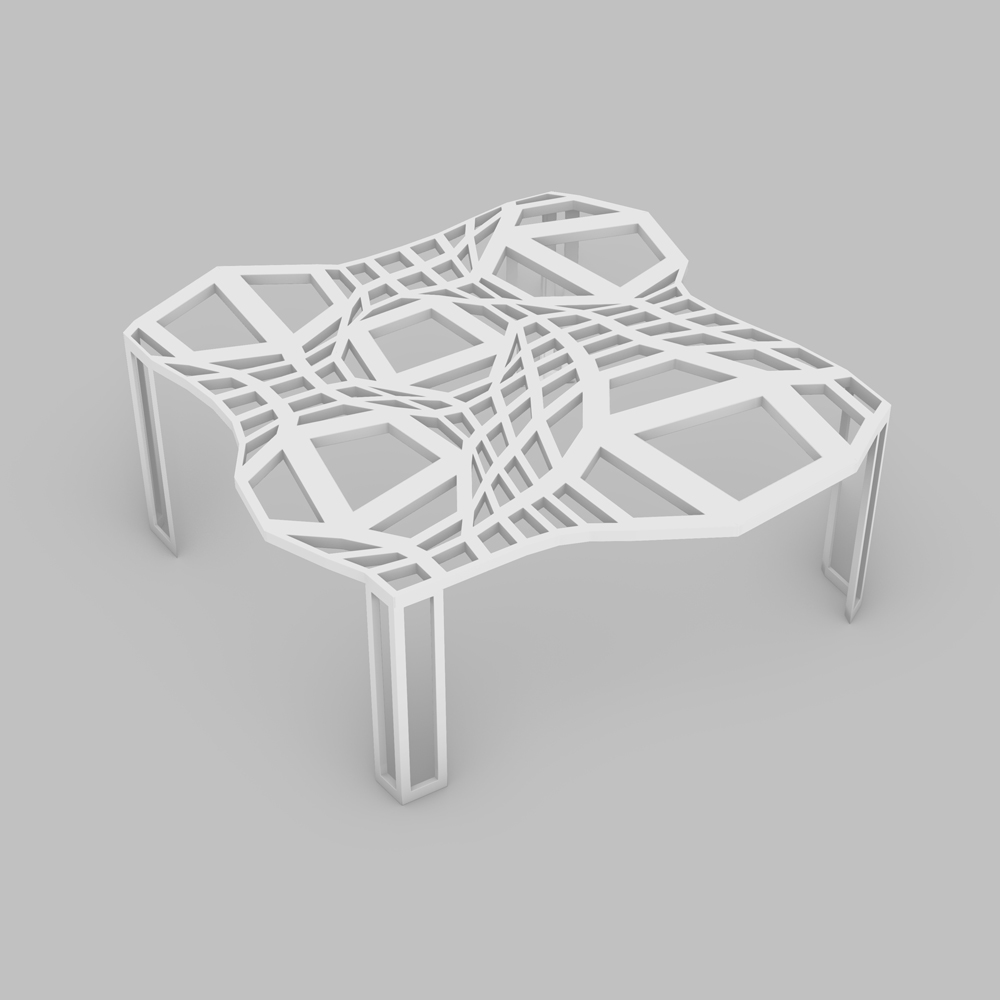
Credits:
Computational design: Ianis Lallemand
Thanks to: Aline Becq, Gwenaëlle Lallemand, Steven Lucero, Gareth Paterson, Julie Sauret and Jiayi Young
